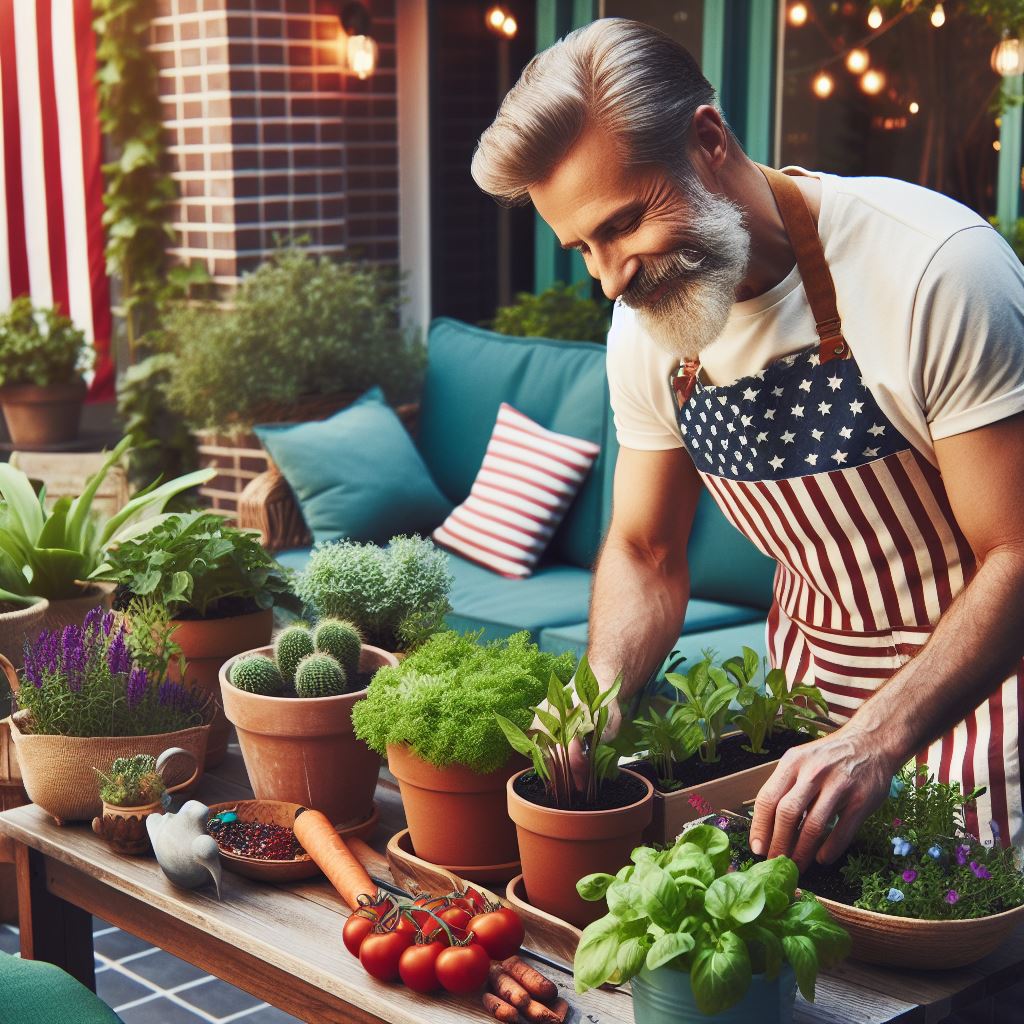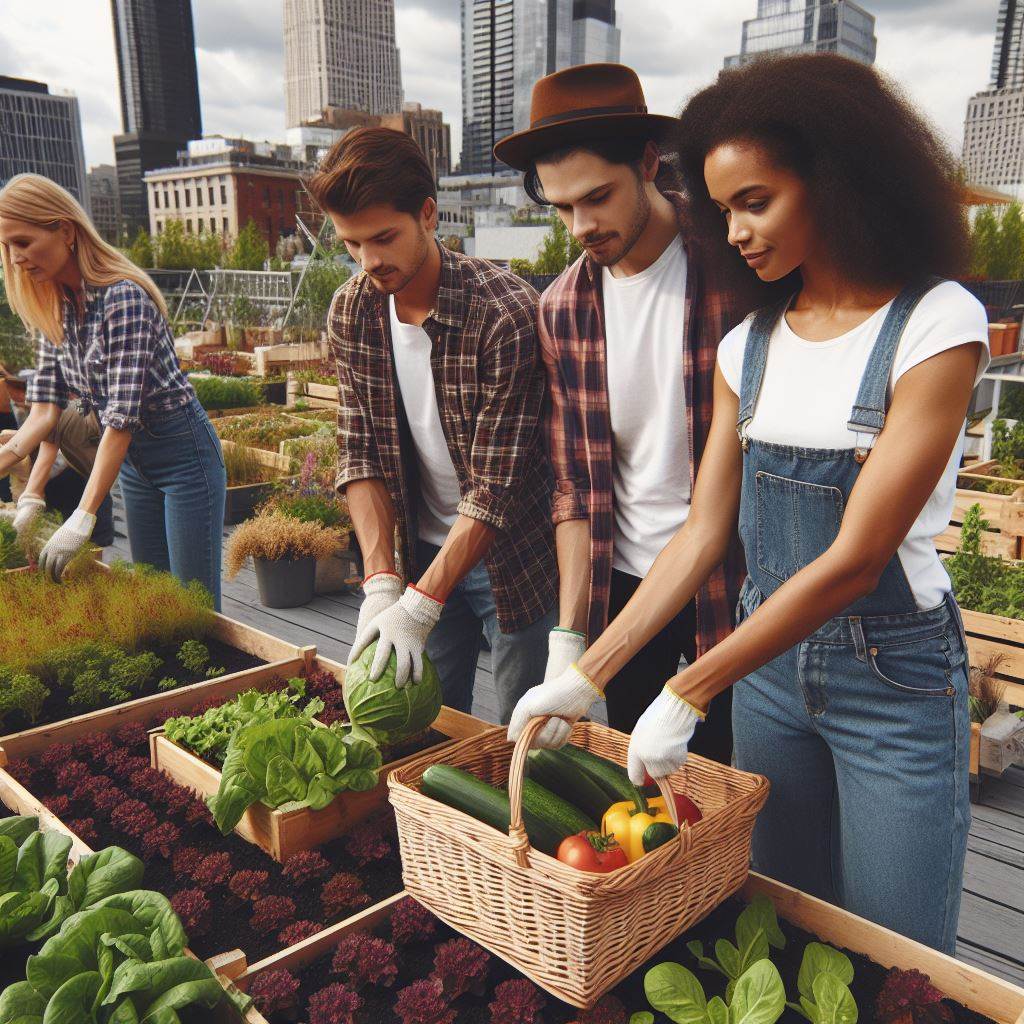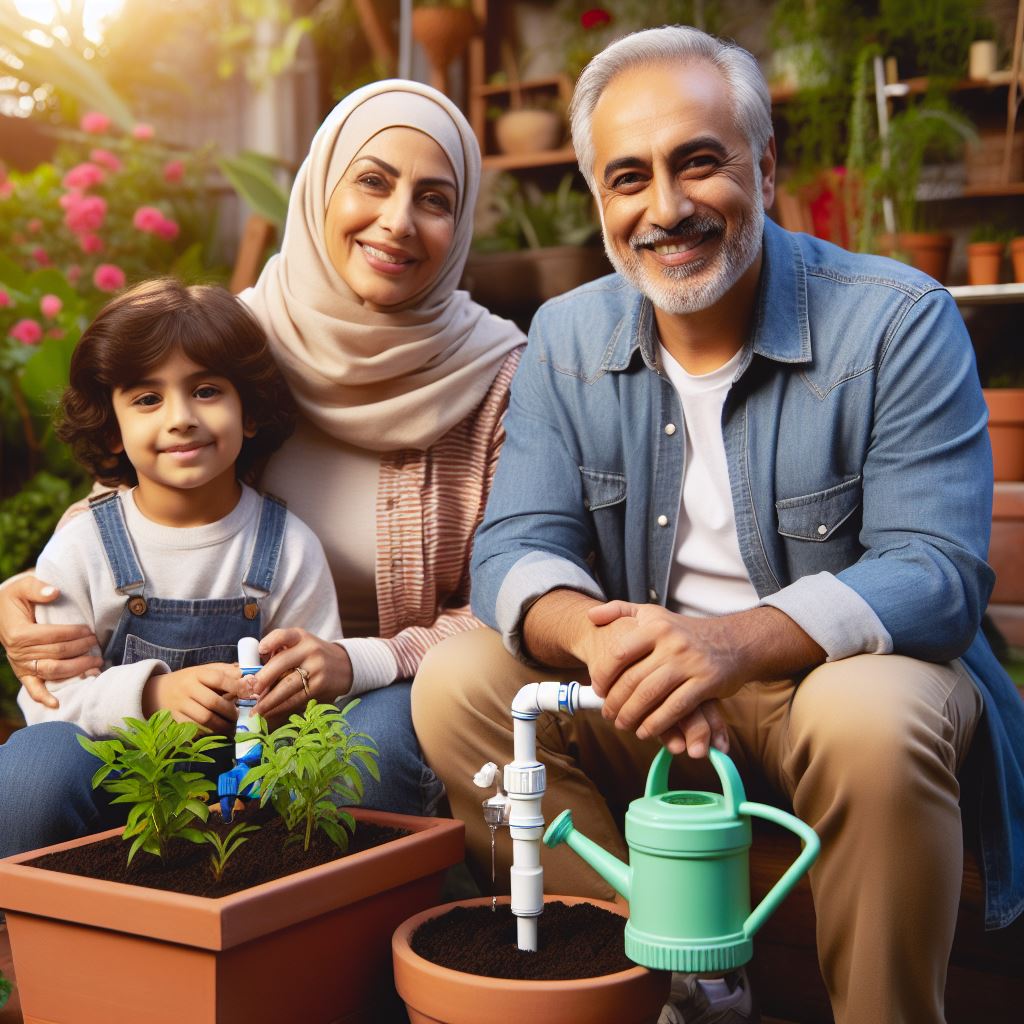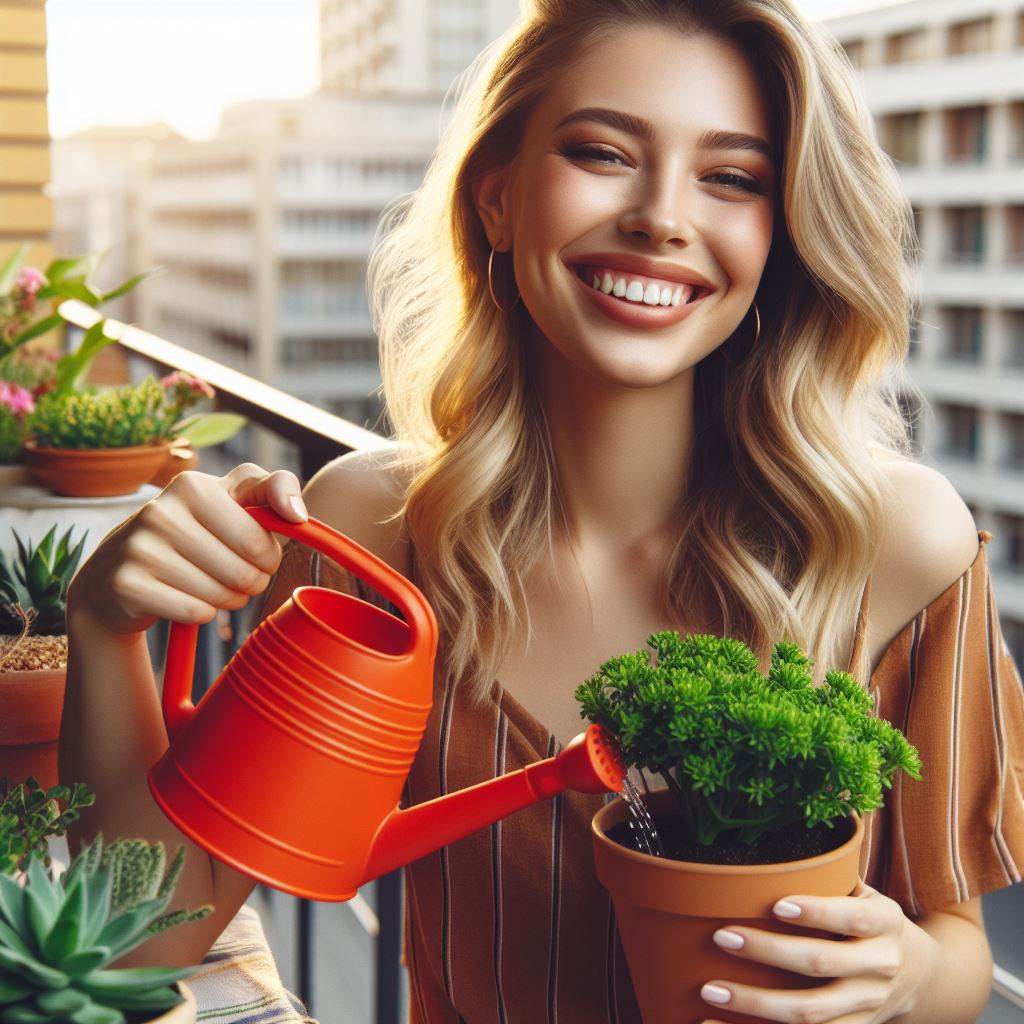Introduction
Container gardening is a fantastic solution for those with limited space.
Growing vegetables in small spaces is important because it allows people to have access to fresh, homegrown produce.
The benefits of container gardening are numerous. It saves space, requires less maintenance, and is accessible to those with physical limitations.
Additionally, container gardening allows for better pest control, as containers can be easily moved indoors.
Container gardening also provides flexibility in terms of location.
It can be done on balconies, rooftops, or even indoors near a sunny window.
This makes it accessible to urban dwellers or those without a traditional garden.
Another advantage of container gardening is the ability to control the soil composition.
Different vegetables require specific soil conditions, and containers make it easy to tailor the soil to meet those needs.
Furthermore, container gardening allows for better control over watering and fertilizing.
Containers retain moisture more effectively, reducing the risk of over or under watering.
Basically, container gardening offers a convenient and efficient way to grow vegetables in small spaces.
Its benefits range from saving space and requiring less maintenance to providing flexibility and better control over soil composition and watering.
With container gardening, anyone can enjoy the joys of homegrown vegetables regardless of their living situation.
Choosing the Right Containers
Selecting the appropriate size containers
Container veggies can thrive in small spaces, but choosing the right containers is crucial for success.
Transform Your Agribusiness
Unlock your farm's potential with expert advice tailored to your needs. Get actionable steps that drive real results.
Get StartedTake into account the space available and determine the appropriate size containers accordingly.
Consider the mature size of the vegetables and ensure the containers are large enough to accommodate their growth.
Remember that insufficient container size can restrict root development and hinder the overall productivity of your plants.
Small plants like herbs and lettuce can do well in containers as small as 6 inches in diameter.
Larger plants like tomatoes or peppers, on the other hand, require containers at least 12-24 inches deep and wide.
For climbing plants such as cucumbers or beans, provide containers with trellises or stakes.
Understanding the importance of drainage
Proper drainage is critical when growing vegetables in containers.
A lack of drainage can lead to waterlogged soil, which can damage the roots and cause plant diseases.
Choose containers with holes at the bottom to allow excess water to escape.
If your chosen containers don’t have drainage holes, drill them yourself to ensure proper drainage.
Additionally, elevate the containers slightly using bricks or risers to prevent them from sitting directly on the ground.
Use a well-draining soil mix specifically formulated for container gardening to further improve drainage.
Considering the material of the containers
Different materials have varying effects on the growth and health of container veggies.
Clay pots provide excellent drainage but can dry out quickly, requiring more frequent watering.
Plastic containers are lightweight and retain moisture better, reducing the need for frequent watering.
Wooden containers can insulate plant roots but may require more maintenance to prevent rot.
Consider the pros and cons of each material before making your selection.
Keep in mind that dark-colored containers absorb more heat, which may be advantageous or disadvantageous depending on your climate.
Avoid using containers made of toxic or treated materials that may leach harmful substances into the soil.
Essentially, choosing the right containers is vital for successful container vegetable gardening.
Select appropriately sized containers based on the plants’ mature size to ensure adequate space for growth.
Remember to prioritize proper drainage by utilizing containers with drainage holes or drilling them yourself.
Consider the material of the containers, taking into account factors such as drainage, insulation, and heat absorption.
By carefully selecting containers, you can create an optimal environment for your container veggies to thrive in small spaces.
Showcase Your Farming Business
Publish your professional farming services profile on our blog for a one-time fee of $200 and reach a dedicated audience of farmers and agribusiness owners.
Publish Your ProfileRead: Space-Saving Farm: Hydroponic Techniques
Ideal Vegetables for Container Gardening
Vegetables that thrive in containers
- Tomatoes: Choose varieties like cherry tomatoes or determinate types that are compact and require less staking.
- Peppers: Bell peppers and chili peppers are perfect for container gardening due to their compact size.
- Salad Greens: Leafy greens such as lettuce, spinach, and kale can be grown in containers for fresh salads.
- Radishes: These fast-growing vegetables are ideal for container gardening, and their small size makes them perfect for limited spaces.
- Carrots: Select small-sized carrot varieties that are suitable for growing in containers, ensuring proper drainage.
- Herbs: Parsley, basil, thyme, and mint are just a few examples of herbs that thrive in containers.
The suitability of compact varieties
- Bush Beans: Compact varieties of bush beans are excellent for container gardening as they do not require trellising.
- Cucumbers: Choose dwarf or bush cucumber varieties that can be trained to grow on a trellis or bamboo stakes.
- Eggplants: Look for compact eggplant varieties that produce smaller fruits, perfect for container gardening.
- Zucchini: There are specially bred compact zucchini varieties that can thrive and produce abundant fruits in containers.
- Strawberries: Compact strawberry plants can be grown in hanging baskets or window boxes, providing a delicious harvest.
Vegetables that can be vertically grown
- Pole Beans: These climbing plants can be trained to grow on trellises or support structures, maximizing space in containers.
- Tomatoes: Indeterminate tomato varieties can be vertically grown by using stakes or cages for support.
- Cucumbers: Choose vining cucumber varieties that can be grown vertically by providing a sturdy trellis or stake.
- Peas: Growing peas vertically in containers using trellises or netting helps save space while encouraging healthy growth.
- Melons: Some melon varieties, like watermelons and cantaloupes, can be grown vertically using supports.
By selecting the right vegetables for container gardening, you can make the most of limited space and achieve a bountiful harvest.
Whether you have a small balcony, patio, or even just a window sill, containers offer a versatile solution for growing your own vegetables.
When choosing vegetables for container gardening, consider their size and growth habits.
Compact varieties that fit well in containers will thrive and produce abundantly.
Tomatoes, peppers, salad greens, radishes, carrots, and herbs are all great options.
Additionally, compact varieties of vegetables like bush beans, cucumbers, eggplants, zucchini, and strawberries are specifically bred for container gardening.
These plants won’t take up much space while still offering a generous harvest.
Maximizing vertical space
For those looking to maximize vertical space, consider growing pole beans, tomatoes, cucumbers, peas, and melons.
These vegetables can be trained to grow vertically using trellises, stakes, or support structures.
Not only does this save space, but it also helps promote healthier growth.
Container gardening is a fantastic way to enjoy fresh vegetables, even if you have limited space.
With the right selection of vegetables and proper care, you can create a thriving container garden that provides an abundance of delicious and nutritious produce.
So, get started on your own container garden and start enjoying the satisfaction of growing your own food in small spaces!
Read: Urban Oasis: Aquaponic Gardening Basics
Soil and Fertilizer Requirements
Importance of quality soil
- Quality soil is crucial for container veggies as it provides necessary nutrients for healthy growth.
- Good soil structure ensures proper drainage, essential for preventing waterlogged roots and root rot.
- Nutrient-rich soil promotes strong root development, leading to robust and productive container vegetables.
- Organic matter in soil improves its fertility and enhances moisture-holding capacity, reducing the need for frequent watering.
The suitability of potting mixes
- Potting mixes are commonly used for growing container veggies due to their lightweight and well-draining nature.
- These mixes are created using a blend of organic matter, such as peat moss or coconut coir, and various additives like perlite or vermiculite.
- Potting mixes provide adequate aeration to the roots and prevent compaction, ensuring optimal growth.
- They are free from pathogens and weed seeds, reducing the risk of diseases and unwanted competition.
Tips for fertilizing container veggies
- Container veggies require regular fertilization to ensure continuous nutrient supply for healthy growth.
- Choose a balanced, slow-release fertilizer specifically formulated for vegetables in containers.
- Apply the fertilizer according to package instructions, usually once a month or as directed.
- Be cautious not to over-fertilize, as it can lead to nutrient imbalances and damage the plants.
- Consider using organic fertilizers like compost or fish emulsion for a more sustainable approach.
- Keep in mind that container veggies have limited root space; therefore, use fertilizers in moderation.
- Monitor plant growth and adjust fertilization rates accordingly to meet their specific nutrient requirements.
- Regularly check the soil for pH levels and adjust if necessary, as different plants thrive in different pH ranges.
- Mulching the surface of the container with organic materials helps retain moisture and slowly release nutrients.
- Replace old or depleted potting soil at the start of each growing season to maintain optimal plant health.
Benefits of having appropriate soil and fertilization practices in container gardening
- Improved plant health: Quality soil and fertilizers provide essential nutrients for optimal plant growth.
- Increased yield: Proper nutrient supply results in healthier plants and higher yields of container vegetables.
- Disease prevention: Using sterile potting mixes and practicing proper fertilization helps minimize the risk of diseases.
- Environmental sustainability: Using organic fertilizers and maintaining healthy soil reduces the reliance on synthetic chemicals.
- Cost-effective: Investing in quality soil and appropriate fertilizers ensures long-term plant health and reduces the need for corrective measures.
In general, the success of container vegetable gardening heavily relies on using quality soil and appropriate fertilization practices.
Understanding the importance of soil quality, the suitability of potting mixes, and proper fertilization techniques is key to growing healthy and productive container veggies.
By providing the necessary nutrients and optimal growing conditions, gardeners can enjoy a bountiful harvest from their small space gardens.
Read: From Water to Table: Hydroponic Growing
Watering Techniques for Container Plants
Understanding the watering needs of container plants
- Container plants have limited soil volume and tend to dry out more quickly.
- Water requirements vary depending on the type of plant and its stage of growth.
- Monitor the soil moisture regularly to avoid either overwatering or underwatering.
Importance of proper drainage
- Good drainage is crucial for container plants to prevent waterlogged roots and root rot.
- Use containers with drainage holes and place saucers or trays below to collect excess water.
- Avoid using containers without drainage or containers with insufficient drainage holes.
Different watering methods and schedules
- The traditional watering method: Water the container thoroughly until water comes out of the drainage holes. Allow the excess water to drain completely before putting the container back in its place.
- The bottom watering method: Fill a tray or saucer with water and let the container absorb water from the bottom. This method prevents overwatering and helps plants develop deep root systems.
- The self-watering system: Self-watering containers have a reservoir that supplies water to the plants as needed. These systems are convenient as they reduce the frequency of watering.
- The drip irrigation system: Use drip irrigation kits to deliver water directly to the base of each plant. This method conserves water and keeps the foliage dry, reducing the risk of diseases.
- Creating a watering schedule: Consider the plant’s water requirements and the environmental conditions. Generally, most container plants require watering once or twice a week, or as needed. Adjust the schedule based on weather conditions, plant growth, and soil moisture levels.
- Additional watering tips: Water the plants early in the morning or late in the evening to minimize evaporation. Avoid wetting the foliage, as it can lead to fungal diseases. Apply mulch on the container’s soil surface to help retain moisture and prevent weed growth. Consider using a moisture meter to accurately determine the soil’s moisture content. During hot and dry periods, increase the frequency of watering to keep the plants hydrated.
By understanding the watering needs of container plants and implementing proper watering techniques, you can ensure healthy and thriving plants in your small space garden!
Read: Organic Garden Pest Identification Guide
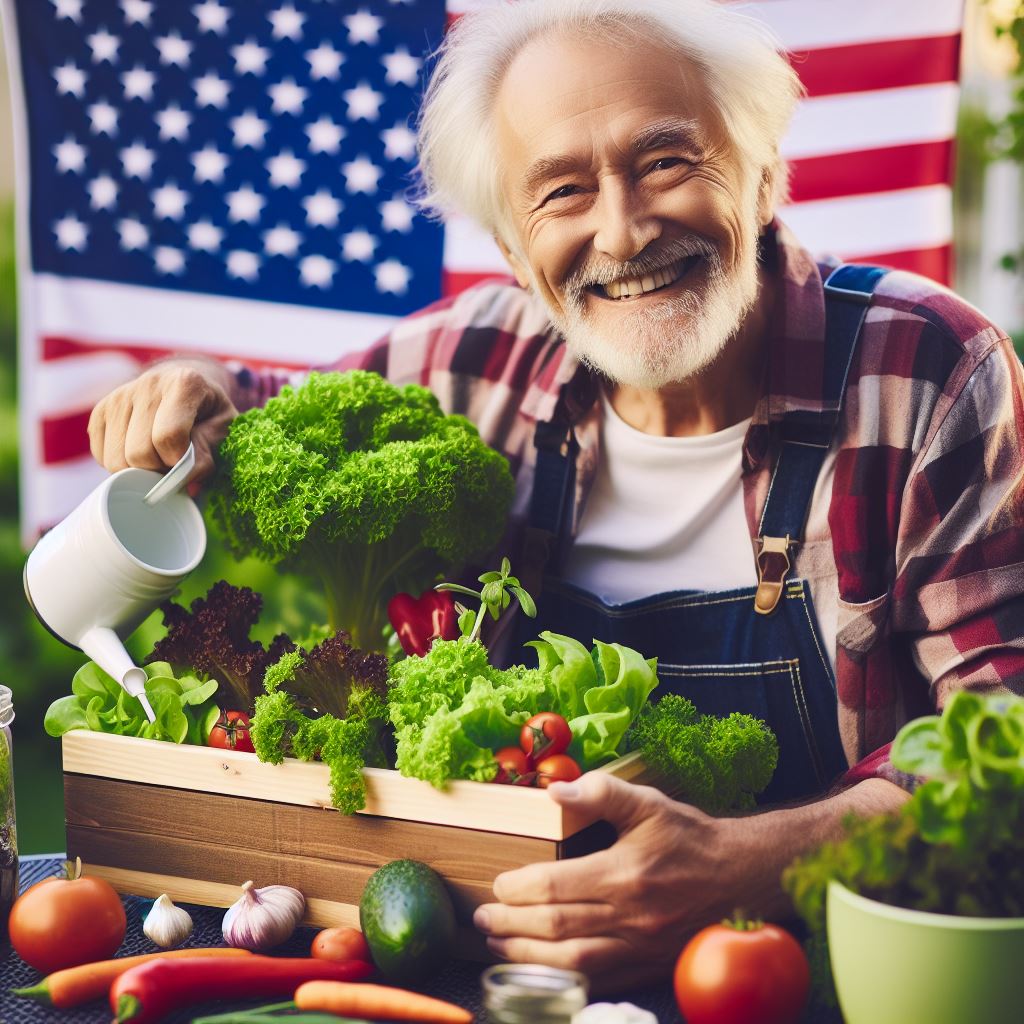
Tips for Maximizing Small Spaces
Utilizing vertical gardening techniques
Vertical gardening is a fantastic way to maximize space in small areas.
By growing your plants vertically, you can take advantage of the unused vertical space in your garden.
Here are some tips for implementing vertical gardening:
- Install trellises or stakes: Use trellises or stakes to support vine-like plants such as tomatoes, peas, or cucumbers. This way, they can grow upwards instead of spreading out horizontally.
- Create a living wall: Use a pallet or vertical garden system to create a living wall. Plant herbs or small vegetables in pockets or planters attached to the wall, saving valuable ground space.
- Build a vertical tower: Construct a tower made of stacked containers or pots. This will allow you to grow multiple plants in a small footprint.
Making use of hanging baskets and planters
Hanging baskets and planters are excellent options for adding greenery to small spaces.
They can be hung from ceilings, fences, or walls to utilize space that would otherwise go unused.
Here are some ideas for using hanging baskets and planters effectively:
- Choose compact plants: Opt for plants that don’t require a lot of space to grow, such as herbs, lettuce, or strawberries. These can thrive in hanging baskets or small planters.
- Mix and match: Combine different plants in one hanging basket or planter to create a beautiful and diverse display. Consider mixing flowers, herbs, and vegetables for an attractive and functional arrangement.
- Hang strategically: Place hanging baskets or planters near windows or entrances, where they can add a touch of greenery and beauty to your space.
Strategies for compact plant arrangements
When space is at a premium, it’s crucial to consider the layout and arrangement of your plants.
Here are some strategies for compact plant arrangements:
- Companion planting: Pairing plants that have compatible growing habits and nutrient needs can help maximize space. For example, growing lettuce or other leafy greens between taller plants provides shade and efficient use of space.
- Intensive planting: Planting closely together in raised beds or containers can increase your yield in a small space. This technique reduces wasted areas and allows plants to support each other’s growth.
- Succession planting: After harvesting one crop, immediately replant with another to maximize the use of space and extend your growing season. For example, as soon as radishes are harvested, plant carrots in the same area.
In essence, maximizing small spaces for container vegetables requires creativity and strategic planning.
By utilizing vertical gardening techniques, making use of hanging baskets and planters, and implementing strategies for compact plant arrangements, you can grow a bountiful and beautiful garden even in limited space.
Get started and enjoy the rewards of fresh vegetables right at your fingertips!
Learn More: Bee-Friendly Gardening: Tips & Plants
Maintaining Container Veggies
Regular monitoring for pests and diseases
- Inspect your container veggies frequently for any signs of pests or diseases.
- Look for chewed leaves, holes, or discoloration, which might indicate insect infestation.
- Identify the type of pest or disease and take appropriate measures to control or eradicate them.
- Use organic insecticides or companion plants to repel pests naturally.
- Remove any infected or damaged plants immediately to prevent the spread of diseases.
Providing adequate sunlight and temperature conditions:
- Ensure that your container veggies receive at least six hours of direct sunlight per day.
- Place your containers in a location with proper air circulation to prevent fungal diseases.
- Monitor temperature fluctuations and protect your plants from extreme heat or cold.
- Use shade cloth or mulch to regulate temperature and protect your plants from scorching sun.
- Water your container veggies regularly to prevent them from drying out due to excess heat.
Importance of pruning and harvesting techniques
- Regularly prune your container veggies to promote healthy growth and prevent overcrowding.
- Remove any dead or damaged leaves, stems, or branches to improve air circulation.
- Prune to control the size of the plants, ensuring they fit well in the container.
- Harvest your veggies when they are at the peak of ripeness to maximize flavor and nutritional value.
- Use sharp and clean pruning tools to avoid the spread of diseases or infections.
Common pests in container veggies
- Aphids
- Caterpillars
- Slugs and snails
- Spider mites
- Whiteflies
Common diseases in container veggies
- Powdery mildew
- Leaf spot
- Root rot
- Fusarium wilt
- Bacterial wilt
Tips for maintaining optimal sunlight and temperature conditions
- Place container veggies in a south-facing spot to maximize sunlight exposure.
- Use reflective surfaces or mirrors to redirect sunlight towards your plants.
- Monitor temperature using a thermometer and adjust container placement accordingly.
- Provide shade during peak afternoon sun using umbrellas or shade cloth.
- Cover plants during cold nights with frost cloth or bring them indoors if necessary.
Pruning and harvesting techniques for container veggies
- Pinch off the tips of fast-growing plants to encourage bushier growth.
- Remove lower leaves of leafy vegetables to improve air circulation and reduce disease risk.
- Harvest leafy greens by picking outer leaves first to ensure continuous growth.
- Use shears to cut large fruits or vegetables, ensuring a clean and precise cut.
- Harvest herbs frequently by cutting above a set of leaves to encourage denser growth.
By following these maintenance practices, your container veggies will thrive and provide you with a bountiful harvest.
Stay vigilant, provide optimal growing conditions, and practice proper pruning and harvesting techniques for successful container gardening.
Troubleshooting Common Issues
Common problems in container gardening
- Pests: Aphids, slugs, and snails are common pests that can damage your container veggies.
- Disease: Plants grown in containers are more susceptible to diseases due to limited air circulation.
- Overwatering: Excessive watering can lead to root rot and other fungal diseases.
- Nutrient deficiencies: Plants may show signs of yellowing leaves or stunted growth due to lack of essential nutrients.
- Sunlight requirements: Insufficient or excessive sunlight can affect the growth and development of container veggies.
- Poor soil quality: Using low-quality or compacted soil can limit root growth and nutrient uptake.
Providing solutions for nutrient deficiencies
- Conduct a soil test to determine nutrient deficiencies and adjust fertilization accordingly.
- Use organic fertilizers or compost to enrich the soil with essential nutrients.
- Avoid over-fertilization, as excessive nutrients can also cause nutrient imbalances.
Potential issues with container size and drainage
- Make sure your containers are large enough to accommodate the root systems of your veggies.
- Choose containers with drainage holes to prevent waterlogging and root rot.
- Elevate containers using bricks or pot feet to improve air circulation and drainage.
- Add a layer of gravel or small stones at the bottom of the container to enhance drainage.
- Monitor moisture levels regularly and water only when the top inch of soil feels dry.
In a nutshell, container gardening can be a rewarding way to grow your own veggies even in limited spaces.
However, it’s important to be aware of common issues and troubleshoot them effectively.
Pests, diseases, overwatering, nutrient deficiencies, sunlight requirements, and soil quality should all be considered when growing vegetables in containers.
By following the provided solutions and tips, you can overcome these challenges and enjoy a successful container veggie garden.
Conclusion
Recap of the benefits of container vegetable gardening
By growing vegetables in containers, you can maximize the use of small spaces and enjoy fresh produce right at home.
Showcase Your Farming Business
Publish your professional farming services profile on our blog for a one-time fee of $200 and reach a dedicated audience of farmers and agribusiness owners.
Publish Your ProfileContainer gardening allows you to have control over the soil, sunlight, and water, resulting in healthier and more abundant crops.
Encouragement to start growing veggies in small spaces
Don’t let limited space stop you from growing your own vegetables.
Container gardening is suitable for anyone, whether you live in a small apartment or have a tiny balcony.
Get creative with your container choices and start planting!
Final word of advice or encouragement
Remember to choose the right containers and provide your plants with proper care and maintenance.
Regular watering, fertilizing, and monitoring for pests and diseases will ensure a successful vegetable garden in containers.
Don’t be afraid to experiment and have fun with your thriving miniature garden!
With container vegetable gardening, you can take control of your food source and enjoy the taste of homegrown goodness.
So why not start today?
Plant your favorite vegetables in containers and witness the joy of growing your own food, even in the smallest of spaces.

